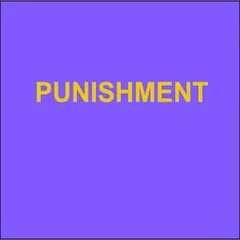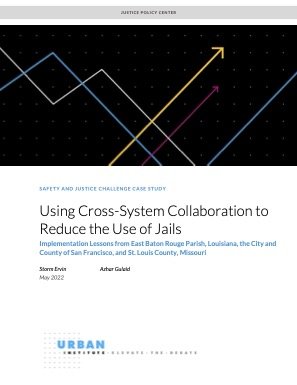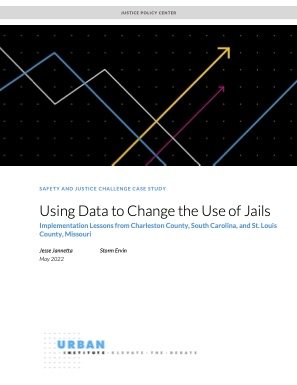By Cassandra Ramdath Bethany Young with Lauren Farrell, Alice Galley, Azhar Gulaid, Jahnavi Jagannath, Alexandra Kurland, Colette Marcellin, Travis Reginal, Georgia Bartels-Newton, Jesse Jannetta, and Katie Robertson
After decades of neglect, US prisons have attracted increasing inquiry and oversight in recent years. This has been compounded by the COVID-19 pandemic, which has had devastating effects on carceral facilities throughoutthe country. Advocates, journalists, and oversight entities are documenting the conditions, cultures, and climates of prisons and putting forth new, more humane, and innovative models of confinement that align with those in more progressive European countries. Research should be at the center of efforts to better understand and improve prison environments, and data should be leveraged to promote transparency of substandard conditions, document and evaluate innovative reforms, and hold systems accountable for making transformative change. But far too often the research community is handicapped by a paucity of data about what happens in prisons as well as by restricted access to them, both of which severely inhibit the generation of new knowledge. Indeed, US prisons are uniquely closed systems, lacking transparency, oversight, accountability, and access, despite being public institutions operating with taxpayer dollars. Research can help discern the types of prison climates and conditions that reflect and promote safety, dignity, humanity, respect, and autonomy for people incarcerated in prisons and staff that work in them. Prison climate—the social, emotional, organizational, and physical characteristics of a prison as perceived by incarcerated people and prison staff—is a vital but underresearched aspect of justice policy. To implement innovations in a prison without documenting and understanding its underlying climate is to neglect crucial context that could either thwart or facilitate such efforts. And prisons with poor conditions can lead to trauma and the development or worsening of mental health issues. Better metrics on prison climates and conditions that are collected routinely, integrated into prison operations and management, and publicly disseminated could be used to identify areas of improvement, support oversight efforts, hold prison leadership accountable, prompt changes to policies and practices, and provide a baseline from which to measure the impacts of those changes. This research agenda is a starting point for building a foundational knowledge base that moves past decades-old prison research grounded in traditional notions of confinement within a security-andcontrol paradigm. Instead, it underscores the importance of leveraging research and data to promote transparency and accountability in carceral systems, and to do so through a racial equity lens. The goal of this agenda is to encourage researchers to pursue groundbreaking inquiry that will ultimately transform prisons into safer, more humane, rehabilitative, and more equitable environments. It begins by setting forth guiding principles and then presents concrete strategies for advancing transformative change in US prisons, reducing racial inequity, improving metrics of well-being, advancing transparency and accountability, and more broadly promoting human dignity in carceral settings.
Washington, DC: Urban Institute, 74p.





















